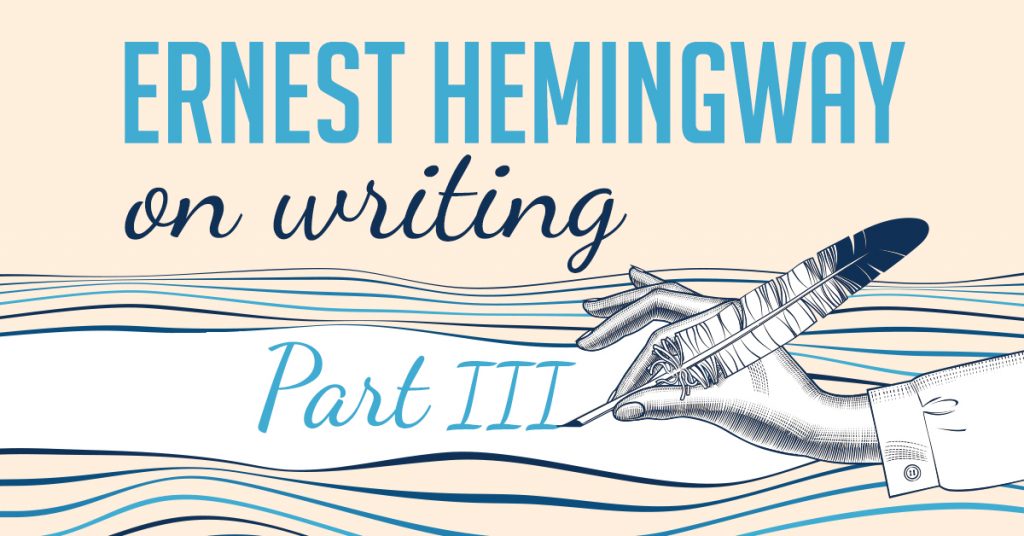I’m back with another round of takeaways from the book “Ernest Hemingway On Writing.”
(If you haven’t read the first two parts, you can find them here:👇
Part 1 & Part 2).
As always – I’ll be sharing a few quotes, then talking about how these can be applied to the career and life of a copywriter.
Let’s get started…😊
The Quote:
“I have to write to be happy whether I get paid for it or not. But it is a hell of a disease to be born with. I like to do it. Which is even worse. That makes it from a disease into a vice. Then I want to do it better than anybody has ever done it which makes it into an obsession. An obsession is terrible. Hope you haven’t gotten any. That’s the only one I’ve got left.”
The Application:
Focus on getting better every day and becoming the best.
That’s how it was for me when I first got really into copywriting. I was studying winning offers, reading books, and writing daily. And I would try to think of myself as the Tom Brady or Michael Jordan or ____Insert Best At Their Craft Person_____ of copywriting.
It wasn’t an ego play – it was a challenge to myself.
It was a mindset hack and a way of approaching the craft.
Tom Brady doesn’t take many practices off…and he sure as hell doesn’t take any games off.
So if I’m an up-and-coming copywriter, how do I justify just “phoning it in” on a letter or project for a client?
I can’t, so I don’t.
The Quote:
“You have to take what is not palpable and make it completely palpable and also have it seem normal and so that it can become a part of the experience of the person who reads it.”
The Application:
This is especially true for those who are writing health copy.
The word “palpable” can be used in a lot of ways, but for the purposes of our conversation, let’s focus on complex concepts or scientific studies.
A huge mistake that health copywriters make is to just copy and paste quotes from studies directly in their copy.
“The administration of ritanserin to poor sleepers, patients with chronic primary insomnia and psychiatric patients with a generalized anxiety disorder or a mood disorder caused a significant increase in SWS. The 5-HT(2A) receptor inverse agonist APD-125 induced also an increase of SWS in patients with chronic primary insomnia.”
Now I just found a random NCBI study then copy-and-pasted an excerpt.
But the point is – writers will put stuff like that into their sales letter when it’s really just gibberish to the common person.
You need to take that and break-it-down for the prospect like this:
“In fact, one study found that ritanserin significantly aided poor sleepers, while helping to support a sense of calm. Specifically, it helped to increase slow wave sleep (SWS) – which research has shown to be an essential ingredient of a good night’s sleep!”
See how much easier that is to understand? How much more palpable it is?
Now, this idea of turning something that is not palpable into something that is doesn’t just stop with health.
When you’re selling biz-opp, or a course on marketing, etc. – it’s similar.
For example, with Biz Opp:
It’s too far outside the scope of the average person’s experience and parameters.
But talking about how they could potentially make an extra $500 per month well generally connect.
Why?
That’s obtainable. It conforms to their beliefs and experiences. It’s much more palpable.
Okay, that’s it for this post. In the following part of this series, I’m going to be talking about “listening,” “empathy, and “observation”…
Which are three keys to effective writing, selling, and communication.
– SPG
P.S. This post originally came from an email I sent to my private list. If you want to see more stuff like this from me, you can apply to join my list using this link
